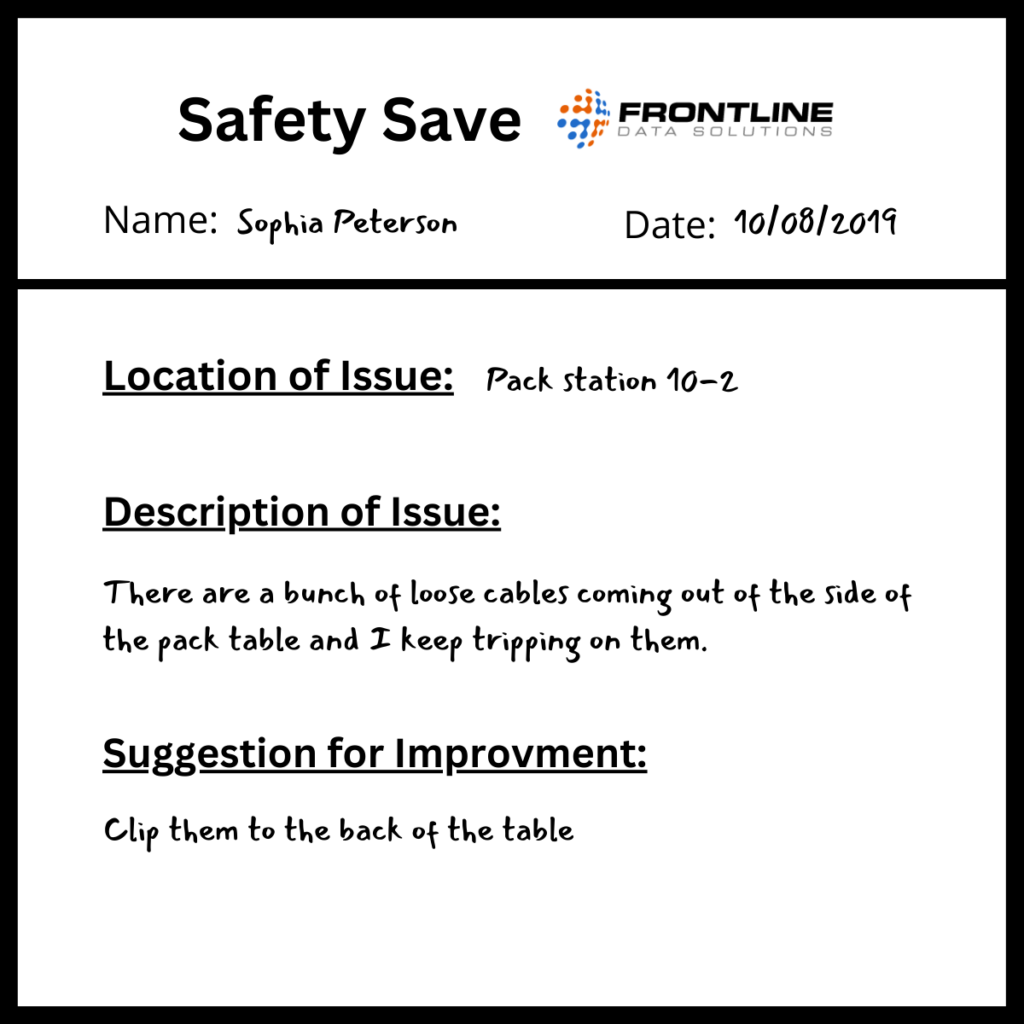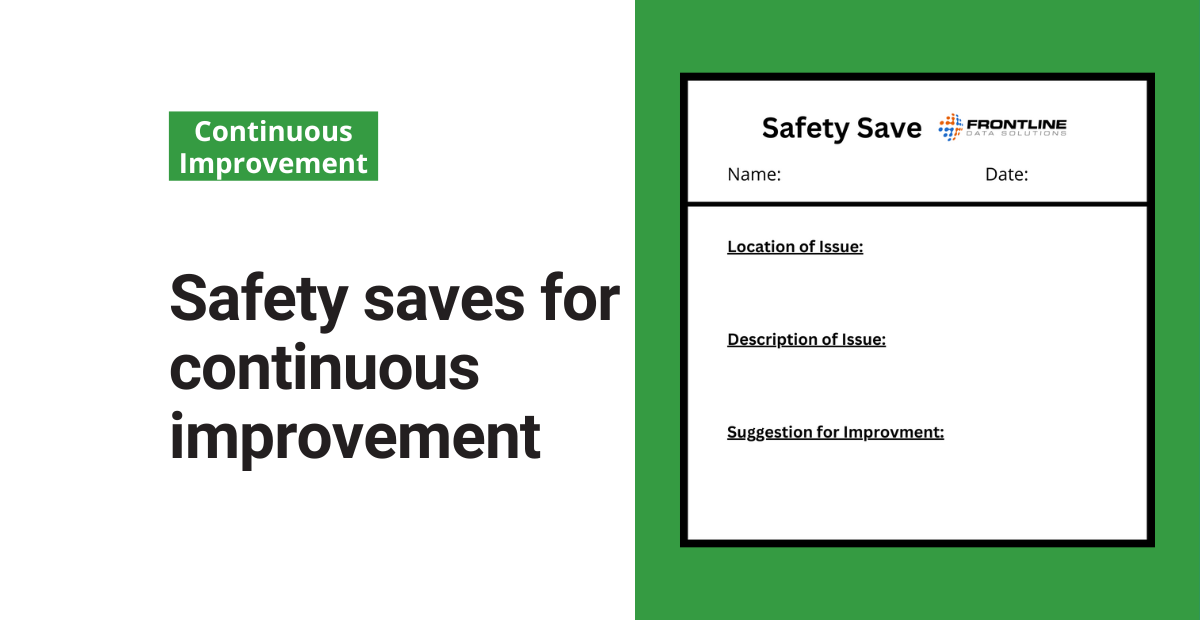When we talk about continuous improvement, our brains tend to float towards things like process modifications, suppliers, and other large costs. But consider how many small variables, on a daily basis, may be weakening your operation.
The easiest way to find improvement opportunities is to use your greatest resource: your employees. Through a simple concept known as “safety saves,” you can make use of your workers’ insights and tackle continuous improvement projects that actually solve day-to-day problems.
What are safety saves?
Safety saves are observations that workers write down for decision makers to review. They can cover almost anything, from process issues to concerns about cleanliness.
Workers can submit safety saves to leaders in a paper or digital format, depending on which is the easiest method for your team.
In my experience, paper safety saves are the easier option because they’re easy to write and you don’t need a fancy technical system in place to receive them. All you need is to provide the safety save template and a drop box where workers can submit them.
Collecting safety saves is akin to having a suggestion box where employees can make upper leadership more aware of improvement opportunities. The main difference with safety saves is that they shouldn’t be anonymous. That’s because you want to be able to follow up with workers on their safety concerns.
The idea behind this concept is that you have a standard process for getting feedback on conditions in your facility from the people who know them best.
Here is an example of what a safety save might look like:

You might notice how simple this example is—a pack table with loose cords. The beauty of safety saves is that they don’t need to be complex issues to solve. Oftentimes, you’ll get submissions for everyday hazards that workers simply don’t have the time or resources to solve.
Imagine how many hazards and inefficiencies you could eliminate if each employee submitted a safety save. You’ll probably get to address a lot of problems you didn’t know existed—and not through any fault of your own.
You simply can’t know about every opportunity on your own. Using safety saves to collect employee suggestions is an easy way to fill in the gaps.
What should a safety save include?
A core tenet of asking for feedback is that you can’t dictate how it comes your way. You definitely want to avoid making workers feel like they have to write their safety saves in a specific way.
Having said that, I think there are two major components that all safety saves need in order to be actionable:
Specific location: Without a specific location, it may be difficult to figure out where the problem exists. For example, you’d rather get a safety save that says: “bin A451 in aisle 102 is really dirty” than one that says: “messy bin in aisle 102.”
Full description: Having a detailed description of the observed hazards or inefficiencies can help the person reading a safety save better understand the problem. Teach workers how to elaborate in their safety saves so you can address issues more effectively.
You can teach workers how to write helpful safety observations during the onboarding process. That way, you can ensure that your team provides helpful feedback from the start. This also has the benefit of showing new hires the value you place on safety.
How can you use safety saves?
If you’re going to encourage workers to take time to submit safety saves, you best be ready to act. After collecting safety saves, review the observations for yourselves.
Go to the aisle that needs cleaning. Check out the process that needs rearranging. Inspect the equipment that’s not working efficiently.
This is your chance to really dive deep into your operation and find meaningful opportunities for improvement. Your goal during this investigation step is to determine:
- Is there an issue that needs to be fixed?
- If an issue exists, does it pose an immediate hazard or is it simply an inefficiency?
- Can you fix the issue right away or does it need more planning?
Examples of problems that need more planning include changes to heavy machinery and major process modifications. These are the types of projects that can actually negatively impact health and safety if done without enough consideration.
On the other hand, cleaning up a messy area or reorganizing a workspace aren’t tasks likely to cause unintended consequences. In that case, you won’t necessarily need to wait before you fix the issue.
The whole point of having a safety save program is to find improvement opportunities that you might not be aware of. It requires you to rely on your team for regular feedback.
That’s why you always need to have an open line of communication with your employees. They’re your greatest weapon against workplace hazards and inefficiencies. Use safety saves to gather data on continuous improvement projects that can keep your site running efficiently for the long haul.
Other posts you might like…
No posts
